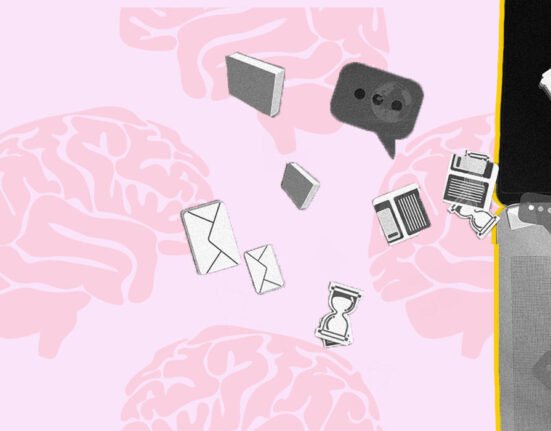The word Euthanasia, which originated from Greek roots, refers to the practice of intentionally ending one’s life to be relieved from interminable pain or suffering. It has a long, complicated history and growing as a contemporary issue of ongoing debate in the medical, ethical, and cultural sphere. Although this concept acknowledges individuals’ autonomy in making their own life decisions, it evokes immense controversy in society.
Difference between Assisted suicide and Euthanasia
In assisted suicide, a terminally ill individual decides to take their own life with assistance from an expert physician. Although the expert lends the patient tools or direction to complete the act, the individual himself executes the final act. In Euthanasia, the patient relies on the medical practitioner to give them a lethal medication that eventually leads to their demise. Even though the individual may not perform the final action due to physical limitations, the medical expert providing the help is nevertheless accountable for the event.
Also Read: Tool for happiness: Self-Care & Self-Love
Types Of Euthanasia
Involuntary vs Voluntary Euthanasia:
When the person who is seeking euthanasia, is mentally capable of deciding to let go of their life due to a terminal illness, it is voluntary euthanasia. On the other hand, when the person is in a coma or not able to give consent, Voluntary euthanasia is performed on them. This raises a moral question and goes against the law in many countries.
Active Vs Passive Euthanasia:
Active euthanasia involves performing deliberate steps towards terminating one’s life by incorporating a lethal substance into the body. Passive euthanasia involves refusing life support or medical intervention in preference to letting the person die by natural phenomena.
Why Do One Request for A Physician-Assisted Suicide
Physician Suicide is one of the types of Euthanasia, in which the physician aids in prescribing some lethal dosage of medication to patients and informs them about its consequences. The patient makes the final choice. The choice of whether or not to opt for Physician-Assisted Suicide is not easy to accomplish. It requires a huge amount of emotional intensity. The reasons behind opting for euthanasia include a decline in autonomy and control, reduced capacity to engage in joyful activities, physical suffering from the illness, and apprehension of more pain in the future.
Also Read: Power of Self-Care in Trauma Recovery
The history of euthanasia ranges from ancient Greece to contemporary debates. During the early 1800s, it started to emerge as an emotive topic in the United States. The Netherlands and Belgium were among the first countries to legalize euthanasia. It is considered a legal practice in Switzerland, Germany, and Japan. According to a 2016 study analysis, 0.3 to 4.6 per cent of individuals died by euthanasia in nations where it is permitted legally.
Case study of Brittany Maynard:
A great number of debates around end-of-life decisions were fueled by Brittany Maynard’s widely-known determination to relocate to Oregon to receive physician-assisted suicide. He was an American activist and struggled with terminal cancer. Her decision to seek euthanasia raises the moral, and emotional aspects of this process.
Case study of Marc and Eddy Verbessem:
In Belgium, the process of euthanasia was been seen by identical twin brothers, who were born deaf and afraid of turning blind. They feared losing the capacity to be able to communicate with each other and this led them to request euthanasia. This case depicts the connection between society’s viewpoints, personal autonomy, and the individual with physical weakness.
Case of Former Dutch PM Dries Van Agt and wife:
Dries Van Agt, former prime minister of the Netherlands and his wife Eugenie van Agt-Krekelberg underwent euthanasia due to their declining health condition. This is one of the few such exceptional occurrences. They were 93 years old.
Controversies around Euthanasia
Physicians who oppose PAS worry about potential ethical issues surrounding euthanasia, as it also contradicts the “right to life” according to the Constitution. The fundamental ethical dilemma of purposefully taking one’s life raises the question of the possibilities of abuse. Opponents of Euthanasia argue that if we accept the “Right to Death By Dignity”, then those who suffer fatal and terminal illnesses will never get the possibilities of modern medical technologies. The concept of palliative care refutes this viewpoint by providing support to both the patient and the caregiver, along with relieving uncomfortable symptoms and suffering through the use of medicated drugs.
Also Read: Caregiver First Aid: Become a Better self advocate
Diverse cultural perspectives on autonomy, death, and suffering impact public acceptance or rejection of euthanasia, which in turn fuels controversy. Public disagreements mirror various opinions on the morality and relevance of euthanasia in various cultural groups, which increases the debate. Another controversy surrounds the misuse of the process of this, in the world of decreasing morals and justice, it may be feasible for family members to incongruously use euthanasia to gain custody of the patient’s belongings.
Counterargument in Support Of Euthanasia
Proponents stress that every person has the right to autonomy and the ability to make choices regarding their own life, including the decision to pass away in a dignified and timely manner when faced with excruciating pain. Those who defend euthanasia contend that it offers a merciful solution to end suffering for individuals who are in agonizing pain or have crippling illnesses that may not respond to palliative care. Some other people argue that the emphasis is on giving the quality of life a higher priority than the duration. They contend that extending life may sometimes lead to a decline in quality and that people need to be free to choose when enough is enough.
Also Read: Top 10 Self-Help Books for Women to Read in 2024
The caregivers of the patient frequently file the majority of petitions. The strain of being a caretaker is immense and affects many areas, including time, money, emotions, physical health, mental health, and social interactions. It also remains a disputable topic in our society. The counterarguments highlight the viewpoint that, in certain circumstances, it can be a kind and compassionate solution that prioritizes individual liberty and the alleviation of suffering.
Note: We published this article solely for information and awareness purposes, and we do not endorse activities such as self-harm or suicide.
References+
- https://www.healthline.com/health/what-is-euthanasia#controversy
- https://www.verywellhealth.com/what-is-euthanasia-1132209
- https://www.ncbi.nlm.nih.gov/pmc/articles/PMC5402774/
- https://www.britannica.com/topic/euthanasia













Leave feedback about this